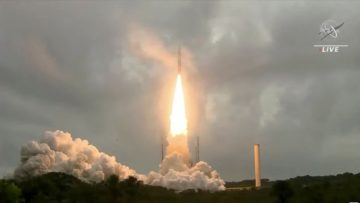Alexandra Witze in Nature:
 The James Webb Space Telescope — humanity’s biggest gamble yet in its quest to probe the Universe — soared into space on 25 December, marking the culmination of decades of work by astronomers around the world. But for Webb to begin a new era in astronomy, as many scientists hope it will, hundreds of complex engineering steps will have to go off without a hitch in the coming days and weeks. “Now the hard part starts,” says John Grunsfeld, an astrophysicist and former astronaut and head of science for NASA.
The James Webb Space Telescope — humanity’s biggest gamble yet in its quest to probe the Universe — soared into space on 25 December, marking the culmination of decades of work by astronomers around the world. But for Webb to begin a new era in astronomy, as many scientists hope it will, hundreds of complex engineering steps will have to go off without a hitch in the coming days and weeks. “Now the hard part starts,” says John Grunsfeld, an astrophysicist and former astronaut and head of science for NASA.
The US$10-billion Webb is the most complicated and expensive space observatory in history, and the successor to NASA’s Hubble Space Telescope, which has studied the Universe since 1990. Following its launch, Webb will now embark on the riskiest part of its mission — deploying all the parts required for its enormous mirror to peer deep into the cosmos, back towards the dawn of time.
Not until all the equipment works and the first scientific observations have been made, likely in July, will astronomers be able to relax. Until then, “there’s going to be a lot of nervousness”, says Heidi Hammel, an interdisciplinary scientist for Webb and vice-president for science at the Association of Universities for Research in Astronomy in Washington DC. The NASA-built Webb launched at 9:20 a.m. local time from the Kourou spaceport in French Guiana, on an Ariane 5 rocket provided by the European Space Agency (ESA). The project’s third international partner is the Canadian Space Agency.
More here.
